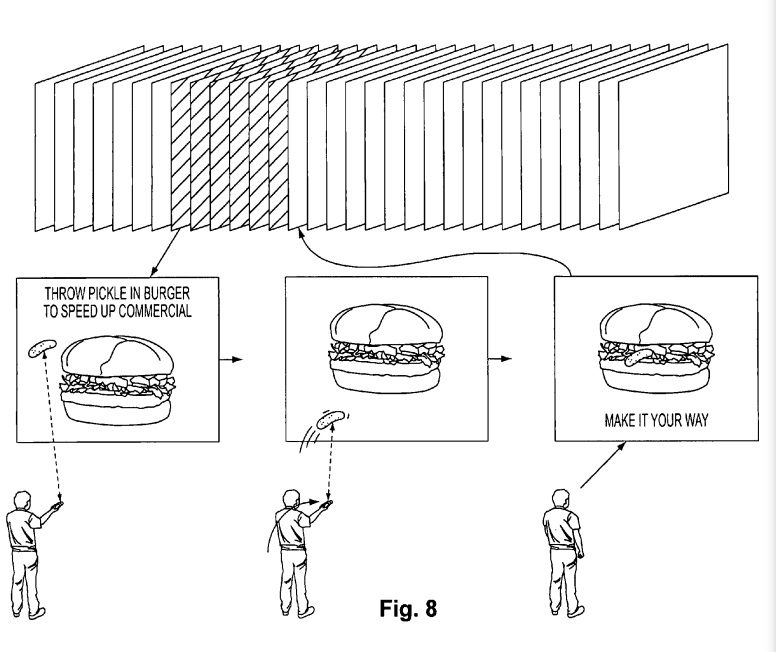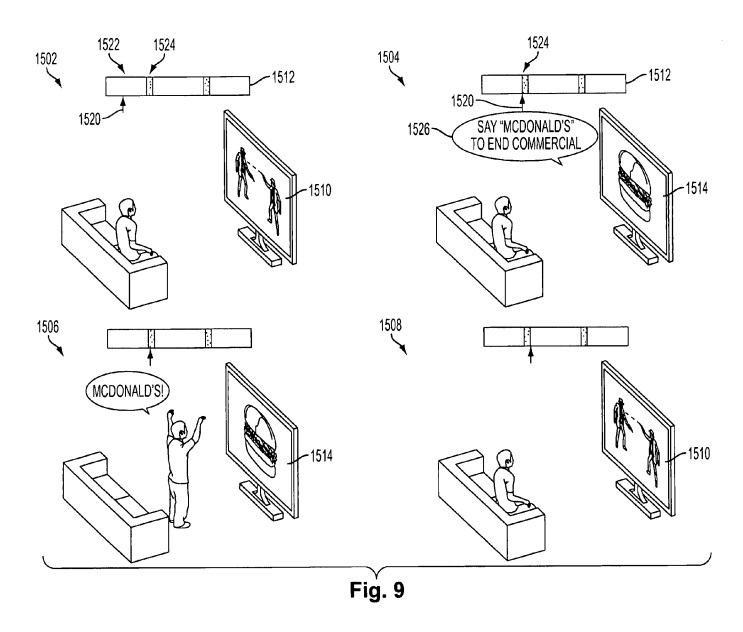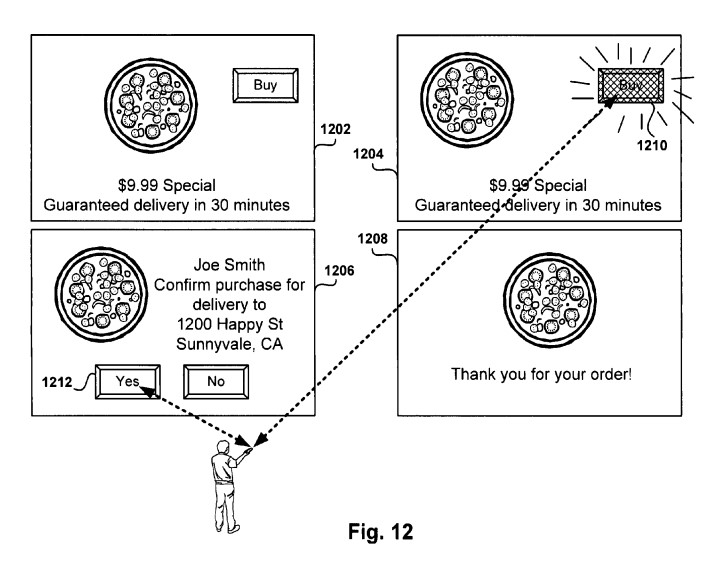Imagine a world where TV ads aren’t just passive interruptions but interactive experiences—where skipping a commercial means playing a mini-game or responding to a voice prompt. Sony’s interactive advertising patent (US8246454B2), filed in 2009 and granted in 2012, lays the foundation for such a future.
This patent describes a system that transforms traditional TV commercials into interactive, game-like experiences, allowing viewers to engage with advertisements rather than passively endure them. By incorporating motion controls, voice commands, and real-time engagement, the system aimed to revolutionize digital advertising, making it more immersive, engaging, and even enjoyable.
Key Insights
The 34-page filing includes numerous complex figures and diagrams, but three key illustrations highlight Sony’s vision. Let’s take a closer look at how this system was designed to work.
- Fig. 8 demonstrates user interaction with an ad using motion-based controls.
- The viewer is instructed: “Throw the pickle to speed up the commercial.”
- By swinging a motion-detecting controller, the user simulates throwing a pickle into a burger, triggering the message “Make it your way” before the ad ends.
- The system allows for multiple interaction methods, including hand gestures, voice commands, button presses, or remote clicks, giving users flexibility in engagement.
This patent illustrates an interactive TV advertising system where a commercial (e.g., for McDonald’s) plays while prompting the viewer to engage. The user can interact by saying a specific phrase like “McDonald’s” or using gestures (e.g., raising a hand) to either engage with or skip the ad. Once the interaction is detected, the system either ends the commercial or transitions to a related segment.
This patent suggests that interactive TV ads could allow users to directly purchase products using a gesture, voice command, or controller.
Companies like Microsoft and Pizza Hut have already experimented with voice and gesture-based ordering through gaming consoles like the Xbox Kinect.
The system removes the need for a traditional online checkout, making purchases instant and seamless.
How It Works:
- Identifying a Non-Interactive TV Program:
- The system takes a regular TV program that doesn’t have interactive features.
- Adding an Interactive Commercial:
- A TV commercial is selected, which includes a mini-game that viewers can play.
- Instructions are used to merge this commercial with the TV program.
- How the Interactive Ads Appear:
- The interactive ad can either:
- Replace a few frames of the TV show temporarily.
- Overlay the TV show so the viewer can play while still watching.
- The interactive ad can either:
- User Interaction:
- The system checks for user input (e.g., pressing buttons on a controller or remote).
- It updates the display based on the user’s actions.
- The interactive ad runs for a limited time, similar to a traditional ad length.
- Delivery System:
- A special server sends the interactive commercial to users.
- A client device (like a gaming console or smart TV) receives the commercial, integrates it with the TV show, and manages the interactive features.
- The system ensures that each user gets an ad suitable for their interests or demographic.
In short, this patent introduces a way to make TV ads more interactive and engaging by turning them into mini-games that people can play while watching their favorite shows.
Want to analyze how this patent compares to current interactive advertising methods? Fill out the form below to know more!




